Medical expert of the article
New publications
Preparations
Effective ointments for shingles: instructions for use and names
Last reviewed: 03.07.2025

All iLive content is medically reviewed or fact checked to ensure as much factual accuracy as possible.
We have strict sourcing guidelines and only link to reputable media sites, academic research institutions and, whenever possible, medically peer reviewed studies. Note that the numbers in parentheses ([1], [2], etc.) are clickable links to these studies.
If you feel that any of our content is inaccurate, out-of-date, or otherwise questionable, please select it and press Ctrl + Enter.
Ointments for lichen are a group of medications for the treatment of dermatological diseases. Let's consider the most effective of them and the features of their use.
Lichen is a group of dermatoses with similar symptoms. Limited spots with flaky skin appear on the body. Such rashes can be accompanied by itching, burning and other painful sensations. The most common form is fungal, its causative agent is a virus. Other forms of the disease are non-infectious, that is, the cause of their development are internal factors, autoimmune reactions or allergies.
Since the defect has a different nature of origin, the treatment will also be different. At the first symptoms of lichen, it is necessary to consult a dermatologist who will conduct a comprehensive diagnosis, determine the type of pathogen and select a specific drug. If the diagnosis is erroneous, then inadequate therapy leads to the disease becoming chronic. It is for this reason that self-medication should not be done. To alleviate the patient's condition, topical agents are used: ointments, creams, gels, lotions, chatterboxes, solutions.
Indications shingles ointment
Dermatological diseases accompanied by inflammation with skin rash, itching and peeling are lichen. The causative agent of the pathology is fungi and viruses. The mechanism of infection and etiology are not fully known. But a number of factors are identified that increase the risk of infection:
- A sharp decrease in immunity
- Chronic infectious diseases
- Hereditary predisposition
The disorder can be caused by heavy physical exertion, neuroses, emotional breakdowns, stress. Antiviral and antifungal agents are used for treatment, the action of which is aimed at stopping the inflammatory process and other pathological symptoms.
Indications for the use of ointment for lichen depend on the type of disease. Let's consider the main types of pathology:
- Ringworm - occurs due to pathogenic fungi, affects the scalp. It manifests itself as uneven spots, causing hair to become brittle at the very roots. Gradually, bald spots with crusts and scales appear on the head. The patient complains of severe itching.
- Shingles - affects the skin and nervous system. The disease is caused by the herpes virus, causing inflammation of the nerve ganglia. The rash appears along the nerve trunks. The rash is small painful blisters with liquid, causing itching and burning.
- Pink - large pink or brownish rashes appear all over the body. At first, a large spot with a red border appears on the body, but gradually other rashes spread from it. Most often, lichen affects the chest, abdomen, back and shoulders.
- Pityriasis versicolor - colorless rashes appear on the skin that itch and flake.
Regardless of the type of lesion, treatment should be comprehensive with the use of antifungal agents. All drugs should be selected by the attending physician. This is due to the fact that improper therapy or self-medication translates the disease into a chronic form.
Release form
A dermatologist treats and diagnoses skin diseases. Therefore, at the first signs of rashes with itching, burning and peeling of the skin, you should go to the hospital. Various topical medications are used for treatment.
Let's look at popular names of ointments for lichen (depending on the type of lesion):
- Pink lichen is the simplest form of the disease with a low degree of contagiousness. It has an infectious-allergic origin, but does not require serious drugs for treatment. The main goal of therapy is to alleviate the painful condition, that is, reduce itching and burning. For this, drugs based on sulfur, salicylic acid and tar are used: Oletetrin, Sulfur-tar and Sulfur-salicylic, Sinaflar, Flucinar.
- Ringworm and pityriasis versicolor are caused by a fungal infection, so antifungal drugs are used for treatment: Mycoseptin, Miconazole, Exoderil, Terbinafine, Lamisil, Clotrimazole, Nizoral and others.
- Shingles - caused by the herpes virus, antiherpetic and antiviral agents (external and oral) are used for treatment. Most effective ointments contain acyclovir. Most often, patients are prescribed: Zovirax, Herpevir, Herperax, Vivorax, Acigerpin, Viru-Merz.
- Red flat lichen - in most cases occurs in a chronic form with frequent exacerbations. For treatment, preparations based on sea buckthorn oil and tar are used, as well as products with hormonal steroids: Advantan, Celestoderm, Triamcinolone, Hydrocortisone ointment, Prednisolone.
If the disease is severe with extensive rashes, then corticosteroid hormonal ointments are indicated for treatment: Sinalar, Flucinar, Salicylic, Sulfuric. Such drugs quickly relieve inflammation, burning and itching, but have many contraindications and side effects.
Yam ointment
A combined external agent with antifungal and acaricidal properties is Yam ointment. It contains the following components: salicylic acid, sulfur, tar, lysol, petroleum jelly, zinc oxide, turpentine, lanolin and others.
The preparation has an antiseptic, astringent and keratolytic effect. Destroys scabies and trichophytosis pathogens (psoroptoid and sarcoptic mites). Does not have a local irritant or sensitizing effect.
- Indications for use: eczema, lichen, dermatitis, trichophytosis. The drug is used in veterinary medicine to treat dogs.
- It is applied in a thin layer to previously treated affected areas of the skin, capturing 2-4 cm of healthy tissue. The product is used 1-2 times a day for 7-15 days.
- Contraindicated for use in case of hypersensitivity to the components. During the therapy period, it is very important to observe the rules of personal hygiene, that is, to maintain cleanliness of the skin.
Sulfur ointment
For many dermatological diseases, an effective disinfectant and anti-inflammatory agent known as Sulfur Ointment is used. The medicine accelerates wound healing and destroys pathogenic fungi.
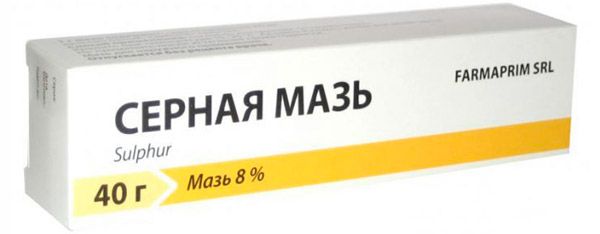
Indications for use: lichen, scabies, fungus, seborrhea, psoriasis, demodicosis, acne, acne. For lichen, use a 10% product, which is applied in a thin layer to the skin treated with salicylic alcohol, gently rubbing. The course of treatment should not exceed 10 days. Sulfur ointment does not cause side effects or overdose symptoms. The only contraindication to its use is hypersensitivity to the active substances.
Salicylic ointment
Very often, pharmaceutical preparations based on salicylic acid are used to treat lichen. Salicylic ointment is used for inflammatory diseases of the epidermis. The medicine has antiseptic, anti-inflammatory and softening-exfoliating properties.
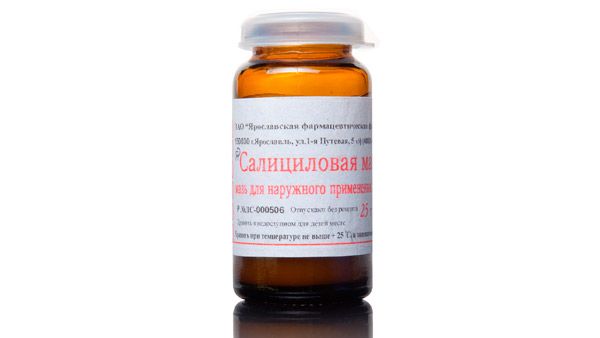
- Indications for use: lichen, acne, burns, scratches, eczema, psoriasis, ichthyosis, pyoderma, calluses, warts, seborrhea, excessive sweating of the feet, diaper rash.
- In complex therapy of lichen, a 2-3% agent is used. In some cases, it is mixed with Vaseline. The drug is applied to the skin 2-3 times a day, gently rubbing into the rash. The duration of therapy is individual for each patient and depends on the type of disease.
- If the drug is used to treat pregnant women or children, it should be applied to small areas of skin. The dosage should not exceed 5 ml.
- Contraindicated for use in case of intolerance to the components, for the treatment of dermatological diseases in infants and renal failure. When treating warts, the medicine should not be applied to the genital area, face and skin with birthmarks.
Zinc ointment
Emollient, antiseptic and drying agent. Zinc ointment causes protein denaturation and albumin formation, reduces exudation. 1 g contains 0.1 g zinc oxide and auxiliary substance: white soft paraffin. Available in 20 g tubes and jars with 10% concentration.
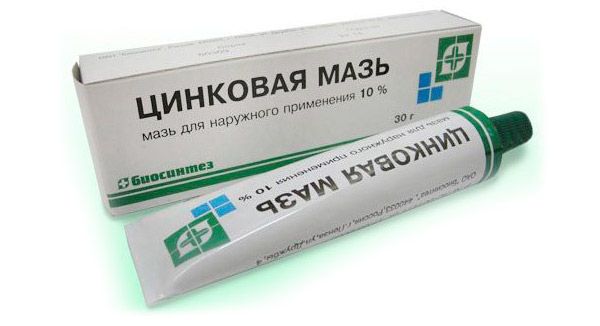
- Indications and dosage: lichen, diaper rash, eczema, dermatitis, pyoderma, bedsores and other lesions of the epidermis with the exudation process. The product is used externally, applied in a thin layer to cleansed skin 2-3 times a day. The duration of the course of therapy depends on the general dynamics, nature and symptoms of the disease, therefore it is determined by the doctor, individually for each patient.
- Contraindications: acute purulent lesions of the epidermis, hypersensitivity to the components of the drug.
- Side effects: long-term use causes skin irritation. If there are hypersensitivity reactions to the drug, signs of allergy, itching, hyperemia, burning, rashes at the site of application are possible.
Zinc ointment with chloramphenicol
Antiseptic combined agent for external use with several active components. Zinc ointment with levomycetin has antiseptic, antimicrobial, keratolytic, drying and regeneration-accelerating properties.
- Indications: purulent wound infections, bedsores, infected wounds, trophic ulcers. The product is applied in a thin layer to the affected surfaces 1-3 times a day. The course of treatment depends on the results of use in the first days.
- Contraindications: intolerance to active components, psoriasis, eczema, chronic renal failure, fungal infections of the epidermis, pregnancy and childhood.
- Side effects occur with prolonged use and application of the product to large areas of skin. Salicylic acid can provoke a resorptive effect.
Vishnevsky ointment
Disinfectant with antiseptic and regenerating properties. Vishnevsky ointment has anti-inflammatory and immunomodulatory effects, improves blood circulation. It has a warming effect, forming a film on the skin that prevents heat loss.
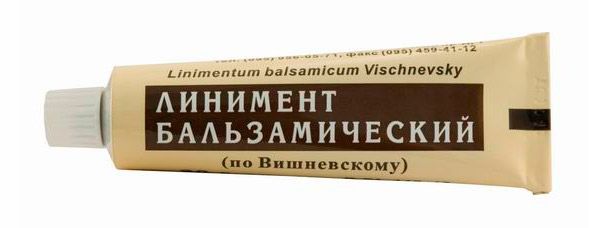
- Indications for use: lichen, lymphangitis, furuncles, carbuncles, skin abscesses, empyema, burns, ulcers, bedsores. Prescribed for hemorrhoids, colpitis, cephalosporosis, lung diseases with purulent abscesses, as well as varicose ulcers and thrombophlebitis.
- It is used externally, in the form of compresses, bandages and for tamponade. It is contraindicated for use in case of intolerance to the components, contaminated wounds, suppurations, mastitis.
Sulfur-salicylic ointment
Antiparasitic, antimicrobial agent for the treatment of dermatological diseases. Sulfur-salicylic ointment has keratolytic, bacteriostatic and fungicidal properties. It suppresses the secretion of sebaceous and sweat glands, providing an antiseptic effect. Softens flaky skin layers, activates local steroids, so it can be used in combination with them. Active components quickly penetrate into the deep layers of the skin and systemic blood flow.
- Indications for use: seborrhea, scabies, psoriasis. The product is applied to the affected areas 2 times a day. If it is necessary to enhance the keratolytic effect, an occlusive dressing is used. If the rash is on the scalp, the medicine is used 2-3 hours before washing.
- Contraindications: hypersensitivity to active components, pregnancy and lactation, patients under 2 years of age.
- In case of using high doses, the inflammatory process may increase, skin irritation, itching and urticaria may occur. To eliminate them, you need to stop using the product.
Clotrimazole
Antifungal locally acting agent from the pharmacological group of imidazole derivatives. Clotrimazole has a broad spectrum of action against many pathogenic fungi that cause infectious diseases associated with dermatophytes, mold fungi and blastomycosis. Small concentrations have fungistatic properties, and large ones have fungicidal properties.
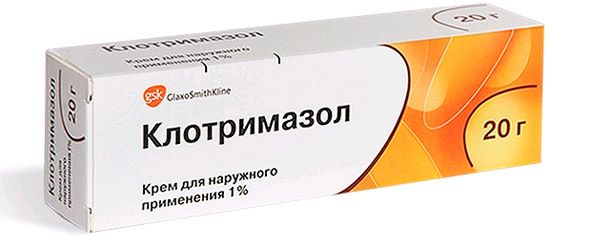
The mechanism of action is based on inhibition of synthesis of ernosterol, which is the main structural element of the cell membrane of fungi. Increased permeability of the membrane causes lysis of the fungal cell, suppressing the activity of peroxidases.
- Indications for use: versicolor lichen, epidermal mycoses with secondary infection, urogenital candidiasis and other fungal skin lesions. The medicine is applied in a thin layer to the affected areas 2-3 times a day, rubbed in. Duration of therapy is up to 28 days, if necessary, longer use is possible.
- Contraindications: intolerance or allergic reactions to active components, early pregnancy (first trimester).
- Side effects are extremely rare. With prolonged use of the drug or exceeding the recommended dosage, allergic reactions are possible. To eliminate them, it is recommended to stop treatment and consult a doctor.
 [ 10 ], [ 11 ], [ 12 ], [ 13 ], [ 14 ]
[ 10 ], [ 11 ], [ 12 ], [ 13 ], [ 14 ]
Tetracycline ointment
An antibiotic with bacteriostatic properties, stops the reproduction of pathogenic microorganisms at the protein level. Tetracycline ointment has a wide spectrum of action, so it is effective against staphylococcal, gonorrheal, streptococcal, chlamydial, viral and other infections.
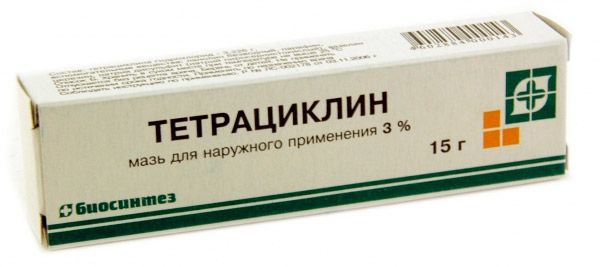
- Indications for use: inflammatory eye lesions (conjunctivitis, trachoma, barley, keratitis, blepharitis) and infectious diseases of the epidermis (lichen, eczema, furunculosis, acne, folliculitis, rashes of various etiologies). Dosage and duration of treatment depend on the severity of painful symptoms.
- Contraindications: intolerance to components, fungal diseases. Use with special caution in kidney diseases, leukopenia, for the treatment of pregnant women and children under 8 years old.
- Side effects: local allergic reactions, loss of appetite, nausea and vomiting, intestinal upset, stomatitis, swelling. The drug can provoke photosensitivity, i.e. skin sensitivity to sunlight. Therefore, it is better to minimize sun exposure during treatment.
Terbinafine
Fungicidal agent with antifungal action. Terbinafine suppresses the activity of almost all fungal agents. Low concentrations have a fungicidal effect on dermatophytes, dimorphic and mold fungi. It has both fungicidal and fungistatic effects on yeast fungal infections.
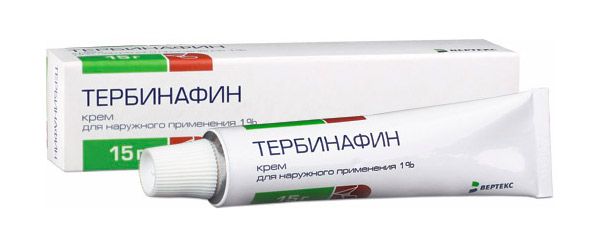
- Indications for use: diseases caused by yeast or mold fungi, dermatophytes. Effective for pityriasis versicolor, microsporia, candidiasis, epidermophytosis, trichophytosis, onychomycosis. The product is applied to the skin 1-2 times a day for 3-6 months. The dosage is individual for each patient.
- Contraindications: hypersensitivity to active components, pregnancy and lactation, patients under 2 years of age, renal failure, various tumor lesions of the body, pathological changes in the vessels of the extremities, metabolic disorders.
- Side effects are manifested in the form of local allergic reactions. When using tablets, there may be a decrease in appetite, diarrhea, taste disturbance, nausea, a decrease in platelets and neutrophils in the blood. In case of overdose, pain in the epigastrium, dizziness and dyspepsia appear. Symptomatic therapy is indicated for treatment.
Chinese ointment
Treatment of lichen is a complex process that requires medical assistance when choosing drugs. Chinese ointment Duba has a combined composition and is used to treat many dermatological diseases. It contains plant components, so it has a minimum of side effects and contraindications.
The medicine is effective against dermatitis, psoriasis, urticaria, scabies, and shingles. The active ingredients are effective against staphylococcal and fungal infections. The product is applied in a thin layer to the affected areas of the skin 1-3 times a day. The duration of therapy is individual for each patient, but, as a rule, no longer than 21 days.
 [ 15 ], [ 16 ], [ 17 ], [ 18 ]
[ 15 ], [ 16 ], [ 17 ], [ 18 ]
Oxolinic ointment
The pharmacological agent contains the active substance - oxoline with antiviral activity. Oxolinic ointment is used to treat and prevent diseases such as:
- Herpes zoster and shingles
- Scaly lichen
- Warts
- Dermatitis herpetiformis Duhring
- Prevention of influenza
- Viral eye infections
- Rhinitis
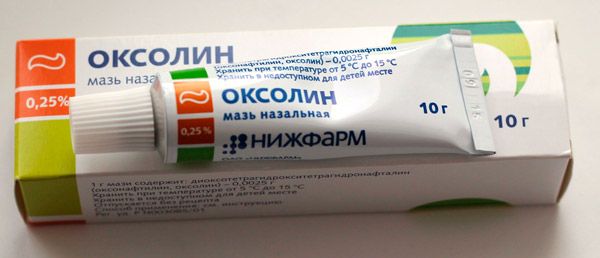
For dermatological pathologies, use a 3% product, applying it to the skin 2-3 times a day. The course of treatment is from 2 weeks to 2 months. Longer use may cause mild allergic reactions: itching, burning, hyperemia. To eliminate them, it is necessary to reduce the dosage or frequency of application of the drug to the skin. Contraindicated for use in case of intolerance to active components and with special caution during pregnancy and lactation.
Qitsunbaxuan ointment
A medicinal product with antiallergenic activity. Qicunbasuan ointment consists of the following components: Amur cork tree, yellow pagoda tree, Canadian gircha, Chinese coptis, sulfur and others. Its action is aimed at destroying pathogenic bacteria, eliminating inflammation, pain and itching. It has high penetrating activity, improves blood supply and metabolism of the affected area.
It is used for shingles and vesicular lichen, psoriasis, scaly skin, inflammation of the epidermis caused by nervous experiences and stress, eczema, red weeping lupus and other pathologies. Qitsunbasuan is applied to wounds 1-2 times a day until the painful symptoms disappear completely. It is not used in case of intolerance to the active components. Long-term therapy can cause allergic reactions. Symptomatic therapy is carried out to eliminate them.
Benzyl benzoate
A medicinal product for the treatment of scabies mites, lice, lichen, eczema, dermatitis. Benzyl benzoate is a medicine for external use with the active ingredient benzyl benzoate medical 10-20%. It is prescribed for the treatment of adults, but is contraindicated for children under 3 years of age, during pregnancy and lactation. The standard course of treatment takes 4 days. If no improvement is observed during this time, the drug is discontinued.
On the first day of therapy, the affected areas of the skin should be thoroughly washed under a shower with soap. The ointment is rubbed into the limbs, then moved to the body. After each treatment, clean clothes and bed linen should be used. On the 2nd and 3rd days of treatment, the skin is not treated, but the remains of the product are not washed off. On the 4th day, the body should be thoroughly washed with soap and treated again.
Side effects include irritation and burning sensation. During treatment, medical supervision is required for 14 days. If the drug gets on the mucous membranes, in the oral cavity or stomach, then rinsing with water or a 2% solution of baking soda is indicated. If it gets into the eyes, they are washed with water and instilled with a 30% solution of sulfanilamide; if pain occurs, then a 2% solution of procaine/novocaine is used.
Apit ointment
Propolis-based products can be used to treat lichen. Apit ointment is one of these preparations, used in veterinary medicine and for treating people. It has antimicrobial, anti-inflammatory, regeneration-accelerating and anesthetic properties. It contains an alcohol extract of propolis, medical petroleum jelly and lanolin. It is used externally, for bandages, tamponade and applications.
The product is prescribed for various dermatological diseases: eczema, lichen, scabies, dermatitis and others. Before applying to rashes, the skin must be washed with soapy water. As a rule, the ointment is applied with napkins under a fixing bandage. Bandages are changed every 2-3 days. In open treatment, the medicine is applied to the skin 2-3 times a day until complete recovery. Apit does not cause side effects or overdose symptoms, and the only contraindication for use is intolerance to the components.
Tar ointment
The product of dry distillation of wood is charcoal. Tar ointment contains this component. Tar has anti-inflammatory, antiseptic, antiparasitic properties, reduces hyperemia, itching and resolves infiltrates.
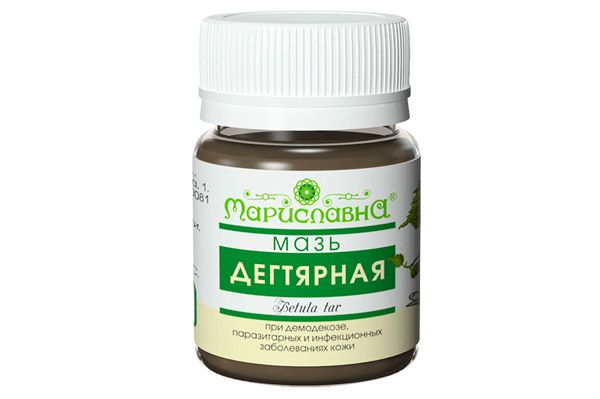
- The drug has a wide range of applications. It helps with many epidermal lesions of various etiologies: lichen, neurodermatitis, eczema, psoriasis, fungal diseases, keratinization disorders, scabies, pyoderma. For lichen, a 5-20% ointment is indicated, in most cases it is combined with sulfur preparations or salicylic acid.
- Contraindicated for use in case of hypersensitivity to the components and kidney diseases. Long-term use and high concentrations may cause skin irritation and local allergic reactions.
- The medicine increases the skin's sensitivity to light, so it is not recommended to use it in the summer on exposed areas of the body. On hairy areas, tar can provoke folliculitis.
Acyclovir ointment
An antiviral agent with high activity against herpes simplex viruses. Acyclovir ointment is an analogue of the purine nucleoside deoxyguanidine, i.e. a component of the DNA structure. Due to this similarity, it interacts with viral enzymes, interrupting their reproduction.
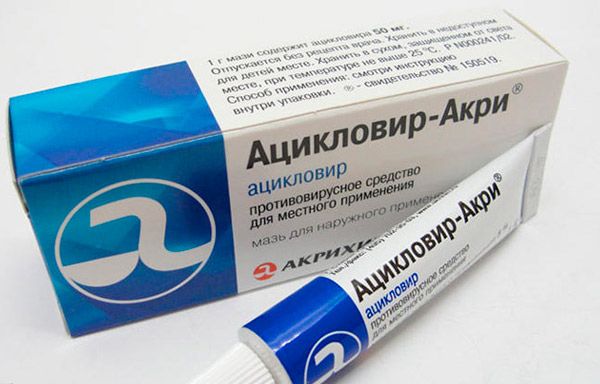
- Used for herpes, stops the formation of new rashes, reduces the likelihood of their spread on the skin and visceral complications. Accelerates the regeneration of damaged tissues and relieves pain in herpes zoster. Since the drug is available in the form of ointment and injections, it can be used to treat herpes in patients with immune system disorders. Has immunostimulating properties.
- Apply to skin and mucous membranes affected by lichen up to 5 times a day. Duration of therapy is 5-10 days. Not prescribed for patients with hypersensitivity to active substances, during pregnancy and lactation.
- Acyclovir is well tolerated, side effects occur in rare cases and manifest as itching and burning. Injections can provoke attacks of nausea and vomiting, gastrointestinal upset, allergic reactions. To eliminate them, it is necessary to stop therapy and seek medical help.
 [ 23 ], [ 24 ], [ 25 ], [ 26 ], [ 27 ], [ 28 ], [ 29 ]
[ 23 ], [ 24 ], [ 25 ], [ 26 ], [ 27 ], [ 28 ], [ 29 ]
Nizoral
Antifungal agent with fungicidal and fungistatic properties. Nizoral has several forms of release: ointment, shampoo and tablets. Contains the active substance - ketoconazole (an imidazole-diaxolane derivative with a broad spectrum of antifungal action). When applied externally, it does not enter the systemic bloodstream.
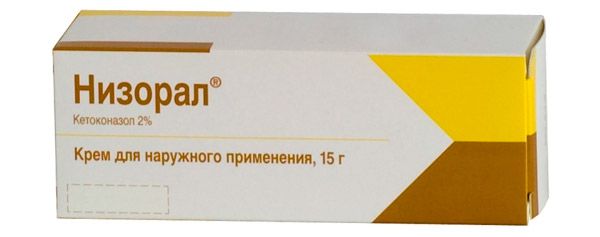
- Indications for use: pityriasis versicolor, seborrhea, inguinal epidermophytosis, mycosis of the skin, dermatomycosis, epidermophytosis of the hands and feet. The cream is applied to the affected areas of the epidermis 1-2 times a day. The duration of treatment for lichen is 2-3 weeks.
- Contraindications: intolerance to components, hormonal imbalance. Can be used during pregnancy and lactation.
- Side effects include itching, burning and irritation at the site of application. In rare cases, contact dermatitis develops.
Sinaflan
Topical glucocorticosteroid with the active substance fluocinolone acetonide. Sinaflan is quickly absorbed through the stratum corneum of the skin, accumulates in the dermis. It is not biotransformed in the skin, systemic absorption is observed when applied to large areas of skin, under dressings and with prolonged use.
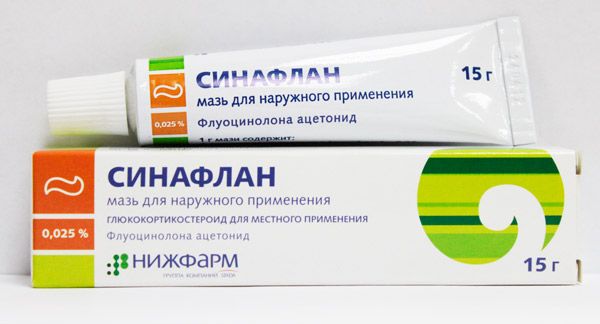
- Indications for use: lichen planus, discoid lupus erythematosus, neurodermatitis, allergic skin diseases and itching of various etiologies, first-degree burns, insect bites, eczematous lesions, seborrhea.
- The medicine is applied 1-3 times a day, in a thin layer, lightly rubbing. The duration of treatment is 5-10 days, if necessary up to 25 days. It is not recommended to apply to the face, folds and sensitive areas.
- Contraindications: hypersensitivity to components, pregnancy and lactation, tuberculosis of the skin, ulcerative lesions, open wounds, infectious diseases of various etiologies.
- Side effects are possible with prolonged use. Some patients experienced skin atrophy and necrosis, systemic side effects typical of glucocorticosteroids, and adrenal hypofunction.
Ichthyol ointment
Antiseptic with disinfectant properties. Ichthyol ointment effectively destroys infectious skin lesions, therefore it is used in dermatology, urology and gynecology. Softens keratinized skin, improves its elasticity, eliminates peeling, accelerates regeneration processes.
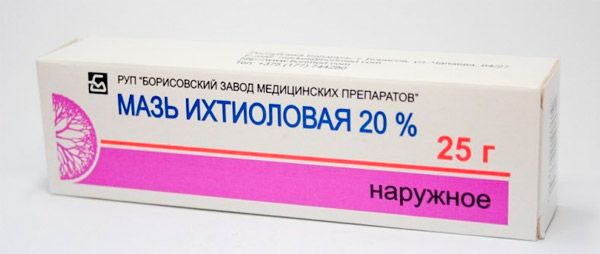
- Indications for use: lichen, burns, erysipelas, eczema, streptoderma, furuncles, hidradenitis, infiltrative-suppurative form of microsporia and trichophytosis. Neuralgia and arthritis of inflammatory and traumatic nature, sycosis, ostiofolliculitis, rosacea, photopox, discoid lupus erythematosus. Do not use in case of allergy to ichthyol and other components.
- It can be used both in pure form and diluted with 10% glycerin. Apply to the inflamed areas, evenly distributing and rubbing until a feeling of warmth appears. The frequency of application and duration of treatment depend on the nature of the rash and the doctor's prescription.
- Side effects manifest themselves in the form of local allergic reactions. To eliminate them, it is necessary to reduce the dosage, and in particularly severe cases, stop treatment.
Aversectin ointment
An insecticidal and acaricidal agent used in veterinary medicine. Aversectin ointment is a thick yellowish mass with a specific odor, intended for external application. When applied to the skin, the medicine acts on the site of accumulation of harmful microorganisms, has a cumulative effect. The concentration reaches its peak after 3-5 days of use. The active components are excreted within 10-12 days with feces.
- It is used to treat dermatological diseases of cats, dogs and fur animals. In some cases it is effective in treating people. Indications for use: lichen, demodicosis, psoroptosis, entomoses, otodectosis, otodectosis, notoedrosis.
- The therapy takes place in several courses, each of which lasts 3-5 days with a break of 48 hours. Long-term use causes side effects: local irritation, itching, burning, headaches and worsening of the symptoms of the underlying disease.
- Contraindicated for use in pediatric patients, during pregnancy and in cases of intolerance to active components.
Sulfur-tar ointment
The safest and most effective remedy for ringworm and scabies is sulfur-tar ointment. The drug has antifungal, antimicrobial and acaricidal properties. It has no side effects, as it consists of safe components: birch tar, petroleum jelly, precipitated sulfur. The ointment is thick, uniform in structure, with the smell of tar and gray-brown color.
Indications for use: treatment of skin diseases in animals and humans. Effective for various types of lichen and scabies. Patients are prescribed a 5-10% solution, which must be applied to the affected areas twice a day. The course of therapy is 5-7 days or until complete recovery. After completion of treatment, it is necessary to completely change the bed linen and underwear used.
Exoderil
Antifungal drug for local use. Exoderil contains the active substance - naftifine (a synthetic antimycotic of the allylamine group). It has a bactericidal, fungicidal and fungistatic effect. Its activity is associated with the ability to inhibit the biosynthesis of ergosterol in the fungal cell through the effect on squalene epoxidase, but without affecting the cytochrome P450 system.
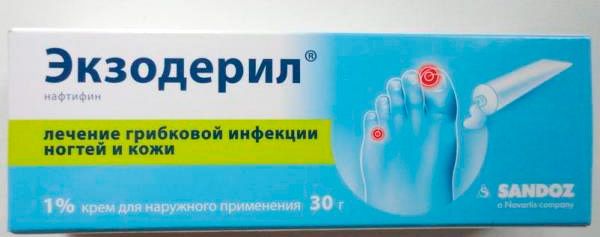
Fungicidal action is observed against yeast-like, yeast and mold fungi. The drug is active against a number of gram-positive and gram-negative bacteria. When applied topically, it quickly penetrates into the deep layers of the skin, creating high concentrations of the active substance. About 6% of naftifine penetrates into the systemic bloodstream, undergoes partial metabolism, and is excreted with bile and urine within 2-3 days.
- Indications for use: lichen and any other fungal skin infections caused by microorganisms sensitive to the drug. The medicine is applied once a day, in a thin layer, gently rubbing until completely absorbed. The duration of the course of therapy depends on the characteristics of the course of the disease, therefore it is prescribed by a doctor.
- Side effects: local allergic reactions, dryness and redness of the skin, burning and itching at the site of application. These symptoms go away on their own, so there is no need to stop taking the drug. Overdose has similar but more pronounced symptoms.
- Contraindications: hypersensitivity to components, treatment of pregnant women and children. It is not recommended to apply to skin with burns and wounds, as well as to mucous membranes.
Veterinary ointment
Ringworm is a common disease that affects both humans and animals. Veterinary ointment is used to destroy the pathogen and restore the skin. In most cases, such drugs are prescribed for animals, but some of them are effective in treating humans.
Yam is one of the most popular veterinary remedies for lichen. It contains tar and salicylic acid. It has fungicidal-bacterial, antiseptic and antacid properties. It is used when standard treatment is ineffective.
Miconazole - affects yeast and pathogenic fungi, has a bactericidal effect. It is used for lichen, mycosis and fungal infections.
Sulfur ointment is a disinfectant and anti-inflammatory agent. Accelerates regeneration processes, destroys pathogenic fungi. It is used for lichen, scabies, seborrhea, psoriasis, acne and pimples.
Aversectin ointment is an effective remedy for the treatment of many dermatological diseases, especially lichen. It is often prescribed in combination with other drugs, for example, DEK cream.
Veterinary ointment, like any other medication, can only be used as prescribed by a doctor.
Sinaflan ointment
A medicinal product with the active ingredient fluocinolone. Sinaflan ointment is prescribed for lichen, eczema and allergic diseases in adults and children, psoriasis, lupus erythematosus, lichen planus, sunburn, insect bites, seborrheic dermatitis, neurodermatitis.
The duration of use and frequency of application depend on the course of the disease and the individual characteristics of the patient's body. Not prescribed for pregnant women, children under two years of age and in case of intolerance to the components. Contraindicated in tumor lesions of the skin, cutaneous syphilis and tuberculosis.
Side effects are manifested by the following symptoms: thinning of the skin, increased hair growth on the body, the appearance of cobwebs and spider veins on the skin. Long-term use can cause secondary infection due to the suppression of local protective factors.
Burnt millet ointment
To eliminate dermatological diseases, not only pharmaceuticals are used, but also some recipes of traditional medicine. Burnt millet ointment is used for lichen. According to patients, burnt millet is effective for all forms of the disease, and is suitable for pregnant women and children.
To prepare the medicine, take a tablespoon of millet and a long nail. The amount of millet depends on the area of the rash. Pour the grain into an iron container, heat the nail and press the millet with it. Black oil will ooze out of the plant material, which is the medicine. The oily liquid is applied to the lesions once a day with a break of two days. The remedy has no side effects and does not cause overdose symptoms.
Lorinden
Anti-inflammatory and antimicrobial agent with active ingredients - flumethasone (synthetic glucocorticosteroid) and salicylic acid (NSAID).
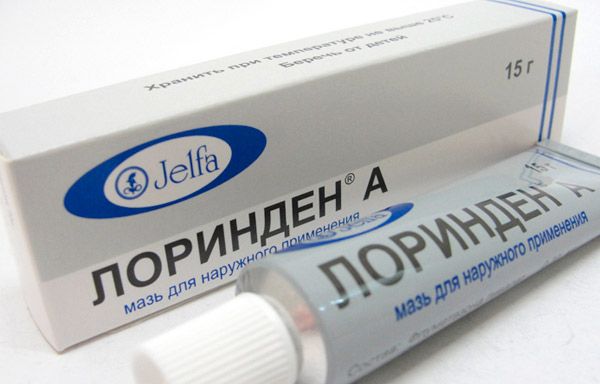
- Indications for use of Lorinden: lichen (red flat, warty), eczema, neurodermatitis, dermatitis, psoriasis, seborrhea, pruritus, urticaria, discoid lupus erythematosus, erythema, insect bites, blastomycosis. The product is applied to the skin in a thin layer 2-3 times a day. After the symptoms of acute inflammation subside, the drug is used 1-2 times a day. The course of treatment is 14 days.
- Side effects: burning, dryness, itching, skin atrophy, pigmentation disorders, perioral dermatitis, steroid acne, local hirsutism. Overdose manifests itself in the form of local allergic reactions, systemic effects of GCS, muscle weakness. For treatment, it is necessary to discontinue the drug.
- Contraindications: first trimester of pregnancy, bacterial, viral and fungal skin lesions, cutaneous syphilis, hypersensitivity to components, acne, skin neoplasms. Not used for infants.
Streptocide ointment
A locally applied medicinal product with a pronounced antimicrobial effect. Streptocide ointment is active against streptococci, and its mechanism of action is associated with disruption of the process of assimilation of microbial cell growth factors.
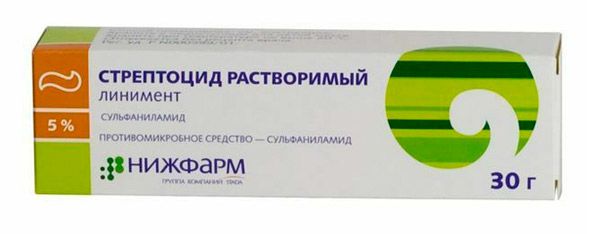
It is used for local treatment of infectious lesions of the epidermis caused by microorganisms sensitive to sulfanilamide. It helps with lichen, purulent-inflammatory processes, burns, skin cracks, pyoderma. It is contraindicated for use in case of intolerance to sulfonamides, impaired renal function, acute porphyria, during pregnancy and lactation.
The product is applied to cleansed skin, in a thin layer, without rubbing. Avoid contact with eyes and mucous membranes. Can be applied under a gauze bandage. The frequency of application and duration of therapy are individual for each patient. Possible side effects: severe allergic reactions. To treat them, it is necessary to discontinue the drug.
Lamisil
Fungicidal agent with antifungal activity. Lamisil affects almost all fungal agents that affect the human body. Its small concentrations have fungicidal properties against mold and dimorphic fungi, dermatophytes.
It has a fungistatic and fungicidal effect on yeast fungi. The therapeutic effect is associated with the destructive effect on the fungal cell membrane and specific inhibition of squalene oxidase.
- Indications for use: diseases caused by mold and yeast-like fungi, dermatophytes. Helps with pityriasis versicolor, microscopy, trichophytosis, candidiasis, epidermophytosis, onychomycosis. Before applying the product to the skin, it must be cleaned. Use 1-2 times a day for 1-2 weeks.
- Side effects: local allergic reactions, dryness and peeling of the skin. Local use does not cause overdose symptoms, as it does not have a cumulative effect.
- Contraindications: hypersensitivity, pregnancy and lactation, patients under two years of age, various neoplasms of the epidermis, pathological changes in the vessels of the extremities.
Diprogent
A combined glucocorticosteroid produced in the form of an ointment and cream for topical use. Diprogent has anti-inflammatory, antibacterial, antipruritic and antiallergic properties. Its mechanism of action is associated with inhibition of the release of cytokines and inflammation mediators. Active components induce the formation of lipocortins, reducing the metabolism of arachidonic acid and inhibiting the growth of various pathogenic microorganisms.
- Indications: lichen planus, psoriasis, atopic and contact dermatitis, eczema, seborrheic dermatitis, itching of the external genitalia and anus, neurodermatitis. The cream is applied to the skin 2 times a day - morning and evening, without rubbing. If occlusive dressings are used, systemic absorption increases.
- Contraindications: intolerance to components, pregnancy and lactation. It is not recommended to use for a long period of time and in large doses.
- Side effects: irritation, itching, burning and dry skin, folliculitis, acne and other allergic reactions. When using occlusive dressings, skin atrophy and maceration, striae, secondary infection, miliaria, Cushing's syndrome are possible.
 [ 32 ]
[ 32 ]
Ointment-chatter
Very often, special medicinal suspensions are used to treat dermatological diseases, especially lichen. Ointment-chatter is a combination product that includes several active components or drugs. As a rule, chatter is prepared independently. Let's consider several recipes that are effective in treating lichen.
The most popular chatterbox for lichen is Tsindol. To prepare it, you need to mix glycerin, distilled water and zinc oxide in equal proportions. The resulting solution heals wounds and disinfects the skin.
It has antiseptic and analgesic properties. The product is applied to the affected areas 2-3 times a day for 1-2 weeks. Longer use or use of increased dosages causes side effects. Most often, patients experience itching, burning and redness at the site of application. Suitable for pregnant women and children, the only contraindication is intolerance to the components.
Exifin
Antifungal agent for local use. Exifin contains a fungicidal substance of synthetic origin - terbinafine. It has a broad spectrum of action against dimorphic and mold fungi, dermatophytes. The mechanism of action is associated with the suppression of early stages of sterol biosynthesis in fungal cells and the development of ergosterol deficiency. This leads to the death of harmful cells.
- Indications for use: lichen, candidal lesions of the skin, trichophytosis, microsporia, onychomycosis, dermatomycosis and other dermatological diseases. The cream is applied to the skin in a thin layer 1-2 times a day, the duration of treatment is 1-2 weeks.
- Side effects manifest as local allergic reactions. To eliminate them, the drug must be discontinued. No cases of overdose have been recorded.
- Contraindications: intolerance to terbinafine or auxiliary components. Use with special caution during pregnancy and lactation.
Uniderm
Synthetic GCS with the active substance mometasone. Uniderm has anti-inflammatory, vasoconstrictive, antipruritic and antiexudative properties.
- Indications: psoriatic lesions of the epidermis, chronic eczema, seborrheic and atopic dermatitis, lichen, hyperkeratosis, dermatoses, itching and peeling of the skin in children. The product is applied to the affected areas once a day. The course of treatment depends on the clinical effectiveness in the first days of use and the presence of side effects.
- Side effects: hyperemia, itching, burning at the site of application. Stretch marks, acne, prickly heat and hypertrichosis may occur. When applied to the face, contact and perioral dermatitis may develop.
- Contraindications: fungal infections, syphilis and tuberculosis of the skin, perioral dermatitis, rosacea. Not prescribed for the treatment of children under 6 months, during pregnancy and lactation.
- Overdose occurs due to accumulation of active components as a result of prolonged use. Negative symptoms manifest themselves in the form of secondary adrenal insufficiency and local allergic reactions.
Permethrin
Natural pyrethrin, found in plants of the Compositae family, with strong insecticidal action. Permethrin destroys arthropod parasites and has a disinfectant effect.
Indications for use: pediculosis of various localizations. The preparation is applied to the hairy part of the body with a cotton swab, thoroughly rubbing into the roots. The treated surfaces must be covered with a scarf and after 40 minutes washed off with warm water using shampoo or soap. Cream shampoo is contraindicated in case of intolerance to the active substances. Side effects manifest themselves as local allergic reactions and disappear on their own.
Fungibak
Veterinary product with fungicidal and bactericidal properties. Fungibak has a paste-like consistency and contains the following components: salicylic acid, precipitated sulfur, zinc oxide, birch tar, petroleum jelly, lanolin, ichthyol and gum turpentine. The ointment base promotes rapid penetration of active substances into different layers of the skin.
Application: lichen, dermatitis, dermatosis, ulcerative skin lesions, rheumatic myositis. Most often prescribed for the treatment of cattle and domestic animals. But in some cases it is also suitable for humans. The product is applied in a thin layer to the affected area, and 2-3 cm around it, rubbing lightly. It is necessary to carry out 1-2 procedures per day, the course of treatment is 4-5 days. The main contraindication is intolerance to the active components. It is used with caution for pregnant women and children.
Corticosteroid ointments for pityriasis rosea
Hormones produced by the adrenal glands are corticosteroids. They act as natural regulators of metabolic processes in the body, suppress the formation of substances responsible for the inflammatory process. Due to their action, swelling, itching and painful sensations are reduced. Corticosteroid ointments used for pink lichen are created from artificial analogues of natural hormones.
Pink lichen is a small rash on different parts of the body, round or oval in shape and pink in color. The rash is very itchy and flaky, gradually acquiring a yellow tint. There are no effective drugs for its treatment. After some time, the spots disappear on their own. But the itching and flaking cause discomfort, so they require the use of special drugs.
Patients are prescribed antihistamines, broad-spectrum antibiotics, and corticosteroids. The latter are divided into four classes: weak, moderate, strong, and very strong. There are also combination drugs that include corticosteroids, antibacterial, and antifungal components.
Let's look at the most popular and effective corticosteroid ointments for pityriasis rosea:
- Triderm
Antibacterial, anti-inflammatory agent with antifungal activity. Contains several active components: clotrimazole and gentamicin sulfate. It is used for pink lichen, simple, allergic and atopic dermatitis, neurodermatitis, eczema and dermatomycosis. The product is applied to the affected areas 2 times a day for 3-4 weeks.
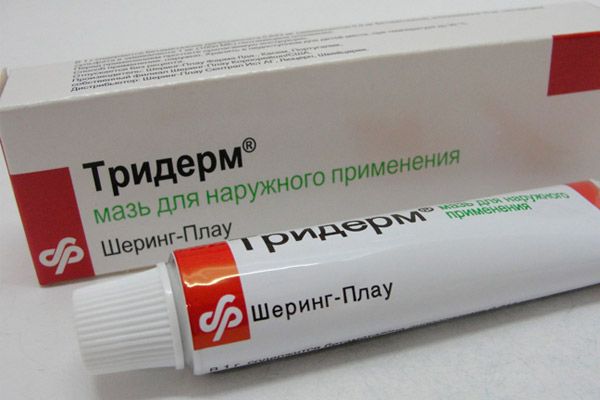
Contraindicated for use in skin manifestations of syphilis and tuberculosis, chickenpox, herpes simplex, post-vaccination reactions, open wounds, for the treatment of children under 2 years of age, during pregnancy and lactation, as well as in case of hypersensitivity to active components. Overdose symptoms are typical for GCS - suppression of adrenal function, Cushing's syndrome, hypercorticism. Side effects manifest themselves in the form of skin allergic reactions and local irritation.
- Prednisolone
Glucocorticosteroid, its mechanism of action is associated with the suppression of the function of leukocytes and tissue macrophages. It is used for lichen, seborrhea, psoriasis, pruritus, erythroderma, alopecia, skin diseases of non-microbial etiology. The dosage and duration of therapy depend on the severity of the disease and its symptoms. It is not prescribed for pregnant women and children, in case of intolerance to the components and for long-term use.
- Diprosalic
Keratolytic and anti-inflammatory agent for external use. Contains two active ingredients: betamethasone dipropionate and salicylic acid. It is used for pink lichen, psoriasis, neurodermatitis, atopic dermatitis, dermatoses, eczema, lichen planus, seborrhea, ichthyosis. The medicine is applied in a thin layer twice a day - morning and evening, covering the areas with rashes.
Contraindications: hypersensitivity to the components, pregnancy and lactation, children. Overdose and side effects are manifested by skin allergic reactions and symptoms characteristic of GCS.
- Hydrocortisone ointment
Glucocorticosteroid, suppresses the functions of tissue macrophages and leukocytes, stops their migration to the area of inflammation. It is used for inflammatory and allergic diseases of the epidermis of non-microbial etiology, pink lichen, eczema, dermatitis, neurodermatitis. Apply to the skin 2-3 times a day in a thin layer. The course of treatment is determined by the attending physician, as a rule, no longer than 10-14 days. It is not prescribed for infectious skin diseases, tuberculosis, pyoderma, mycoses, ulcerative lesions and wounds. The drug is contraindicated for the treatment of pregnant women and children.
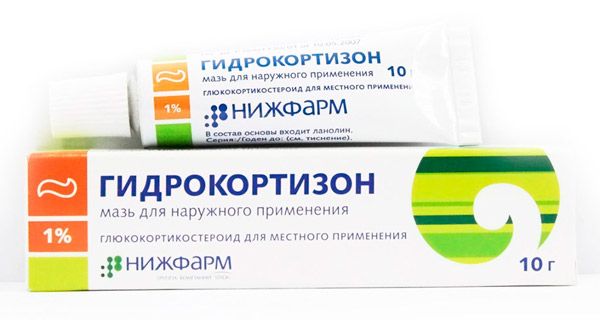
- Belosalik
A combined topical agent. Belosalik slows down the release of inflammation mediators, reduces cytokine production and stops hyaluronidase activity. Relieves inflammation and reduces the amount of inflammatory exudate, itching and irritation. The glucocorticosteroid constricts blood vessels and lowers tissue temperature. After application to the skin, it forms a protective film that prevents the loss of endogenous moisture and has a water-repellent effect.
- Indications for use: red verrucous lichen and red flat lichen, urticaria, neurodermatitis, psoriasis, ichthyosis, eczema (chronic, acute), erythema, papulosquamous rashes of unspecified etiology, dermatitis. The product is applied to the skin 1-3 times a day, the duration of treatment is up to 3 weeks.
- Side effects: burning and irritation, dryness, peeling, itching, folliculitis, acne, increased hair growth at the site of application, hypogmentation. Overdose manifests itself in the form of systemic reactions to GCS and local allergic reactions. Treatment is symptomatic.
- Contraindications: patient under one year of age, pregnancy, syphilis and tuberculosis of the skin, pustular diseases, rosacea, post-vaccination reactions, open wounds, fungal infections, trophic ulcers, hypersensitivity to components.
 [ 33 ], [ 34 ], [ 35 ], [ 36 ]
[ 33 ], [ 34 ], [ 35 ], [ 36 ]
Ointment for ringworm
Microsporia or ringworm is a dermatological disease caused by fungi of the genus Microsporum. Most often it affects the skin, hair, nails and eyelashes. The rash is oval in shape with a small red swelling. The patient feels itching and pain at the site of the lesion. The peak of the disease occurs at the end of summer and the beginning of autumn, children are most susceptible to the disorder. Adults also get sick, in them the pathology ranks second after foot lesions.
For treatment, external agents are used - ointments, creams and gels. Ointment for ringworm is prescribed by a doctor, based on the localization of the rash and its nature. Let's consider the most effective drugs:
- Sulfuric - destroys pathogenic fungi, dries wounds and accelerates the regeneration process. The medicine is applied to the affected area once a day for 7-10 days.
- Lamisil - stops the growth and reproduction of fungi, destroying them. The course of treatment takes 5-6 weeks, but relief comes on the 5th day of use.
- Salicylic - stops the inflammatory process and pathogenic fungi. Contraindicated for application to the face, used 1-2 times a day. Treated areas must be covered with a sterile napkin or occlusive dressing.
- Mikospor – destroys the structure of the fungal cell. Duration of therapy is 4-6 weeks with daily procedures 2-3 times a day.
- Sulfur-tar - it should be applied not only to the rashes, but also to the area around them. The active ingredients destroy fungi and disinfect the skin. If the affected area is swollen, the medicine is applied under a bandage.
In addition to the above-described drugs, disinfectant solutions can be used for treatment: potassium permanganate, furacilin, rivanol. Hormonal drugs are used only as prescribed by a doctor. The drugs can be combined with skin treatment with iodine tincture. The product dries out rashes, destroys pathogenic fungi and bacteria that cause wound suppuration.
Ointment for lichen for children
To treat dermatological diseases, especially lichen in children, medications based on natural plant components are used - salicylic acid, sulfur, tar. Such ointments have antimicrobial, anti-inflammatory and antiseptic properties. The most commonly used drugs are:
- Sulfur, sulfur-tar and sulfur-salicylic ointments - relieve inflammation, soothe itching and pain. Have a minimum of contraindications and side effects. Excellent disinfection and accelerate the regeneration of damaged tissues.
- Tebrofen – helps with lichen planus, can be combined with other drugs.
- Clotrimazole is a topical agent that is effective against harmful microorganisms that cause pityriasis versicolor. It is practically not absorbed through the epidermis and mucous membranes, so it does not have a systemic effect.
- Naftifine (Exoderil), Lamisil - help with pityriasis versicolor. They are applied to cleansed affected areas 1-2 times a day. Therapy is continued after the rash has disappeared for 14 days for preventive purposes.
- Sinaflan is another effective drug for treating lichen planus in children. It belongs to the pharmacological category of corticosteroids, so it is suitable for patients over 2 years old. Therapy is carried out in courses with a break of 1-2 weeks.
In addition to the above-described medications, antifungal medications can also be used: Microseptin, Terbix, Miconazole. They have a broad spectrum of action, but can cause side effects: itching, burning and irritation. Therefore, before starting therapy, it is necessary to conduct a sensitivity test, that is, apply the drug to a small area of the skin and monitor the reaction. Ointment for lichen for children can be used only as prescribed by a dermatologist.
Pharmacodynamics
Skin diseases, especially lichen, have many varieties. To eliminate them, drugs with different mechanisms of action are used. The pharmacodynamics of Terbinafine ointment indicate its activity against almost all fungal agents that affect the human body. The drug has antifungal and fungicidal properties.
Fungicidal activity is manifested at low concentrations of the product against dimorphic and mold fungi, dermatophytes. The therapeutic effect is associated with the destruction of the fungal cell membrane and inhibition of the enzyme responsible for the normal functioning of its cells. Due to the cessation of ergosterol production, bacterial and fungal pathogens gradually die.
 [ 37 ]
[ 37 ]
Pharmacokinetics
Terbinafine ointment accumulates in the skin and subcutaneous tissue, providing a constant therapeutic effect. Pharmacokinetics indicate its rapid absorption into the skin and low penetration into the systemic bloodstream - about 5%. Biotransformed into metabolites that do not have antifungal activity. Most is excreted in the urine.
Other topical anti-lichen agents have similar pharmacokinetics. Some accumulate in the skin, creating concentrations that are lethal to fungi, viruses and bacteria. Others require regular use, as they do not have a systemic effect, do not penetrate the bloodstream and do not accumulate.
Dosing and administration
The effectiveness of treatment depends not only on the chosen remedy, but also on the correctness of its use. The method of application and doses of ointments for lichen are selected by the doctor, based on the form of the disease, the symptoms that appear and the individual characteristics of the patient's body (age, presence of concomitant pathologies).
Some medications are prescribed in short courses of 3-5 days with breaks. Others are used daily for 5-14 days, 1-3 times a day. The course of treatment is individual for each patient, but, as a rule, 3-4 weeks. A number of drugs must be gently rubbed into the skin or applied under an occlusive dressing, while others are contraindicated to be applied in a thick layer or rubbed into rashes.
Use shingles ointment during pregnancy
Shingles during pregnancy is not only an unpleasant but also a dangerous disease. The most severe is considered to be shingles, which occurs due to infection with the herpes virus type 3. This virus is the causative agent of chickenpox, so it can cause congenital pathologies or death of the fetus, especially in the first trimester. Shingles in the 2nd and 3rd trimesters is not so dangerous, but still requires medical attention.
The use of ointments for lichen during pregnancy depends on the form of the disease, its symptoms, the gestation period and the characteristics of the mother's body. Antifungal, antihistamine, antiviral agents, systemic drugs aimed at stimulating immune functions are used for treatment.
Ointments based on salicylic acid, sulfur and tar are absolutely safe. The following preparations should be used with special caution: Acyclovir, Oxolinic ointment, Clotrimazole. For the treatment of pregnant women, natural herbal based talkers and ointments (alternative therapy) can be used, but only after permission from the attending physician.
Contraindications
Almost all medications have contraindications for use. Let's consider the main ones, using the example of drugs for lichen:
- Individual intolerance to the components of the product
- Pregnancy and lactation period
- Patients are under two years of age
- Infectious diseases of the epidermis of various etiologies
- Syphilis and tuberculosis of the skin
- Ulcerative lesions and open wounds
A number of medications should not be used for long periods of time or applied to large areas of skin, as this may cause negative reactions that will worsen the course of the disease.
Side effects shingles ointment
In order for the treatment to be not only effective but also safe, it is necessary to follow the doctor's instructions. Side effects of ointments for lichen occur when these recommendations are not followed and most often manifest themselves with the following symptoms:
- Itching
- Burning
- Swelling
- Peeling and hyperemia of the skin
- Increased hair growth at the site of application (GCS)
- Allergic reactions (urticaria, Quincke's edema, etc.)
If the ointment accidentally gets inside the body, then symptoms of nausea and vomiting, dizziness, headaches appear. Gastric lavage and medical care are indicated for treatment.
Overdose
Long-term use of medications causes various negative symptoms. Overdose most often manifests itself in pronounced side effects. That is, patients may experience increased itching, burning, peeling and other signs of local irritation.
To eliminate them, it is necessary to reduce the dose of the drug and the frequency of its use. In particularly severe cases, it is recommended to discontinue therapy and seek medical help.
Interactions with other drugs
Almost all topical remedies for lichen interact well with other drugs. They can be prescribed simultaneously with oral medications or injections.
If several ointments are prescribed, then you need to follow the rules for their application, that is, do not use two products on one area of skin at the same time. This is due to the risk of developing side effects. Also, do not forget about the contraindications and intolerance of the components of each of the drugs used. It is imperative to conduct a sensitivity test.
Storage conditions
External remedies for the treatment of lichen must be used according to their instructions, and it is very important to observe the storage conditions. It is recommended to keep the preparations at an air temperature of no higher than 20 ° C, in a dry place protected from sunlight and inaccessible to children.
If storage conditions are not observed, the medicine loses its medicinal properties. The ointment may change color and consistency, acquire a smell. It is prohibited to use such drugs, even if their expiration date has not yet expired.
 [ 62 ]
[ 62 ]
Shelf life
Ointments for lichen should be used only as prescribed by a doctor. When buying a medicine and during its storage, it is worth paying attention to the expiration date. Most products are effective for 24 months from the date of manufacture. After this period, they must be disposed of. Self-use of drugs is dangerous and in most cases ineffective. This is due to the fact that in the early stages, the symptoms of all forms of lichen are similar to each other. This is what leads to the use of the wrong drugs.
Cheap ointment for lichen
There are many drugs on the pharmaceutical market that are used to treat different types of lichen. They differ in their mechanism of action, composition and, of course, cost.
- The cheapest and at the same time effective ointment for lichen is sulfur, salicylic, tar-based medicines and combined preparations, that is, sulfur-salicylic and sulfur-tar ointments. Their cost is from 5 UAH and up, depending on the volume and packaging (tube, jar).
- The economy category also includes veterinary products: YaM, Aversectin ointment, Miconazole, Fungibak and others, their price starts from 15 UAH.
- More expensive are drugs with several active components and glucocorticosteroids: Hydrocortisone ointment, Triderm, Prednisolone, Exoderil. They cost from 25 to 300 UAH.
- A separate group includes remedies for shingles: Zovirax, Gerpevir, Gerperax, Vivorax. Their price is from 50 UAH and up.
Regardless of cost and mechanism of action, medications should only be used as prescribed by a doctor.
Effective ointment for lichen
Lichen is a dermatological disease that occurs in both adults and children. To eliminate it, various drugs are used, both in form of release and in effectiveness.
Let's look at the top 10 effective ointments for lichen:
- Preparations based on sulfur, tar, zinc and salicylic acid have no contraindications and do not cause side effects. They have antiseptic, disinfectant, anti-inflammatory and antifungal properties. Suitable for treating children and pregnant women.
- Miconazole is a broad-spectrum antifungal agent. It effectively treats pityriasis versicolor. The active substance destroys the pathogen and accelerates the restoration of damaged tissue.
- Zovirax, Gerperax, Acigerpin - antiherpetic drugs with the active substance - acyclovir. Effective in the treatment of shingles.
- Exoderil – most often prescribed for ringworm. Contains the active ingredient naftifine, has anti-inflammatory properties and destroys parasitic fungi.
- Hydrocortisone is a GCS with antihistamine properties. It eliminates itching, pain and burning, but has a number of side effects, so it is used only as prescribed by a doctor.
- Clotrimazole - prescribed for colored, red flat and ringworm. Active against a wide range of viruses and fungi. Used until the disease is completely eliminated.
- Nizoral - quickly and effectively fights solar lichen, eczema, dermatitis and other skin diseases. Contains the active ingredient - ketoconazole.
- Mikoseptin is an antifungal agent that contains zinc undecylenate and undecylenic acid. Soothes damaged skin, relieves inflammation, irritation, disinfects. Helps with ringworm.
- Terbinafine – treats tinea versicolor and shingles, various dermatitis, eczema. May cause a number of side effects, so it is used as prescribed by a doctor.
- Flucinar and Sinalar are hormonal drugs. They are used for lichen planus and lichen pinkus, psoriasis, eczema, dermatitis of various etiologies. They quickly eliminate itching, burning and other painful symptoms.
Any effective ointment for lichen should be prescribed by the attending physician. This is due to the fact that some drugs are effective against one form of lichen, but do not help with others. Self-administration of drugs is dangerous, as it can cause uncontrolled side effects, aggravating the course of the disease.
 [ 69 ]
[ 69 ]
Attention!
To simplify the perception of information, this instruction for use of the drug "Effective ointments for shingles: instructions for use and names" translated and presented in a special form on the basis of the official instructions for medical use of the drug. Before use read the annotation that came directly to medicines.
Description provided for informational purposes and is not a guide to self-healing. The need for this drug, the purpose of the treatment regimen, methods and dose of the drug is determined solely by the attending physician. Self-medication is dangerous for your health.

